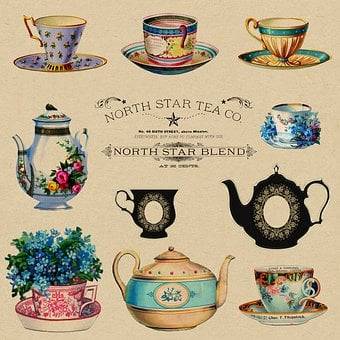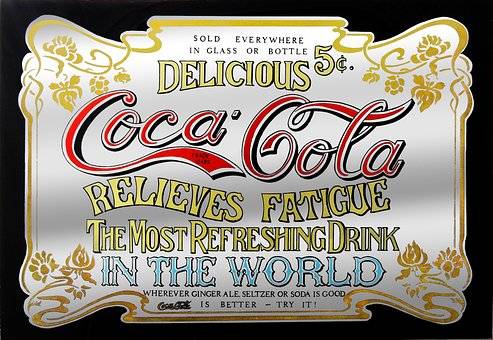While traveling, surfing through mobiles, or watching the television, we come across advertisements prepared by multiple brands. They take it to elaborate on their product’s USP (unique selling point) and create a long-term collaboration with the consumer in concern. The types of advertisements that we come across now are different from the ones in the beginning. Earlier vendors did explain their goods verbally. Which flags and carved signs did replace later on.
And now, we have special marketing teams comprising designers and content creators taking care of everything. Advertisement as a niche has undergone a plethora of changes over the year. And here in this writeup, you will go through the various eras one after the next. So without further ado, let’s get started.

The Journey
3000BC to 1800
If we date back to the time of the Egyptians in 3000BC, modern-day archaeologists came across a Papyrus in their detailed excavation of the ruins of Thebes. The content within was by a slaveholder trying to discover the whereabouts of a runaway slave and simultaneously promoting his weaving shop.
Moving forward, the discovery of the printing press did roll out the first milestone towards modern-day advertising in the fifteenth and sixteenth centuries. And then, in the United States, in 1704, the first newspaper with an advertisement was published. The early 1800s saw the rise of the billboard, and brands found much larger space to express the value propositions they wished to communicate with the target group. The first-ever 24 -sheet billboard got displayed at the Paris Exposition in 1889 and later at Columbian Exposition in 1893 (Chicago).
1900 onwards
By the 1900s, advertising became a full-frame occupation, with different agencies trying to mark their dominance in the market of Europe and America as relevant. But in the beginning, agencies did serve as mere brokers for newspaper advertisement space. Which later got upgraded into the firms deciding on the content as well. N.W. Ayer & Son in Philadelphia is the first to accept full-time responsibility for the advertising content.
In the 1910s and 20s, philosophers and human behavior analysts started to explain their take on the same. These scholars believed that brands could target and reshape human instincts into a specific desire to purchase using advertisements. Such an approach by Edward Bernays made him stand out as the pioneer of modern-day cigarette advertising.

Moving on, it was in 1941 that the world witnessed its first paid television ad in the United States. Thus marking the digitalization and advent of modern-day ads. And almost about 50 years later, in 1994, the brand AT&T on HotWired.com did purchase a little rectangle marking the debut of internet-based ads.
Then it was time for the world to meet the Google search engine and learn about the concepts like AdWords, Pay-per-click, and mobile advertising as applicable. And with the passing years, there was no stopping. In 2002, the first ad blocker was launched, followed by LinkedIn and Facebook in 2003-04. Also, in 2003, we can see Google acquiring AdSense, giving a new definition to “content-facilitated advertising.”
Starting from 2000 till date, there has been a massive shift in the sphere of brand marketing. The world now lives on the web, for the web, and by the web, with unique platforms being game changers.
Modern-day advertising: Social media sites at their best

From papyrus to modern-day i-pads, advertisements have come a long way. Also, with the internet at its best, marketers find it easy to spread the word describing their brand over wireless. In the list below, you are going to get detailed info on the various platforms and what makes them unique from the rest:
Facebook:
As the OG of all the social media platforms, Facebook tops the list. You can choose between a carousel, video, stores, and live content to reach your target audience. However, you need to be very specific with your Facebook advertisements and work on generating an impressive list as applicable.
YouTube:
Often ignored and quite underrated as a social media platform, YouTube stands next on our list. The platform has an impressive reach, helping marketers to connect with their target audience between 18-49 years of age as convenient. Evidently, the best part about YouTube is its followers, channels, and comments section, where brands can showcase their USP in the best way possible. Thus maintaining the utmost level of transparency.
Instagram:
In 2012, Instagram became a part of Meta, and since then, there has been no stopping. The platform is the perfect definition of the philosophy “a picture is worth a thousand words” and helps individual marketers reap the best benefits of eCommerce as a brand. The entire advertisement game on the “gram” enables you to reach out to a loyal base of worthy audience. As a brand or influencer, you must keep it accurate and use relevant hashtags. Also, Instagram stories have unique ways of leading shoppers to the correct CTA turnover rates.
WhatsApp:
Our latest star in town and probably the future of personalized advertisement, WhatsApp, stands fourth on the list. The WhatsApp for Business feature allows homegrown brands to reach out to their target audience in the unique way possible. Over the years, WhatsApp, as a social media platform, has turned out to be the largest messaging service all over the globe. Here, the number of users stands at a 1.5billion+.
Snapchat:
When your brand is about the young tribe (12 to 17 years), there can be no better place than to move with Snapchat. It is the best place to create a buzz and let your audience know about the final product’s features.
Pinterest:
It has been a few years, and Pinterest is already gaining those special eyes from advertisers. With most of the audience being women, Pinterest offers an excellent opportunity for brands to cultivate their target ads. Here, the basic idea is to let users see things of interest.
So that is all, helping you with the story of the “evolution of advertisements.” From the start, it has come a long way and is still undergoing evolution, trying to keep up with the change. As a marketer, you must cultivate the available knowledge and lead the way to clear-cut specifics for your brand.



